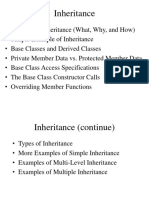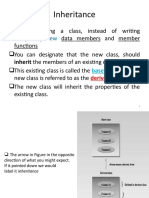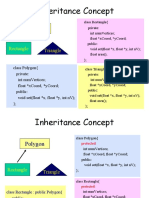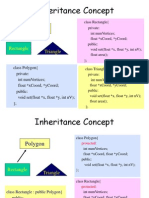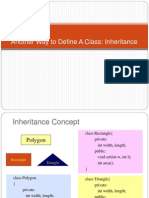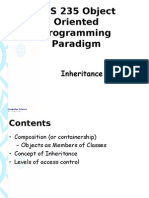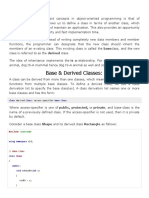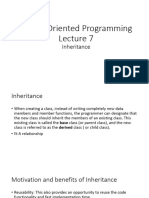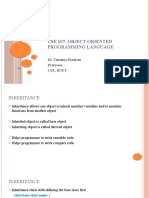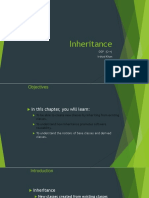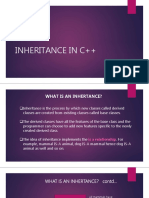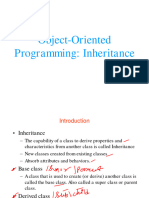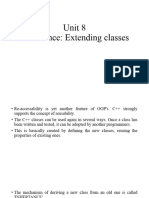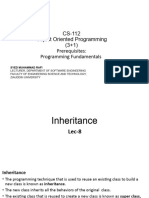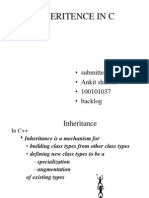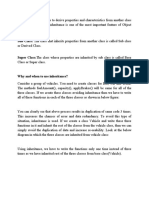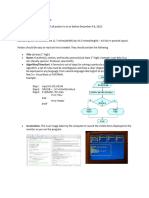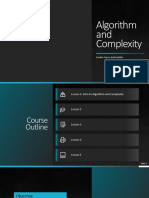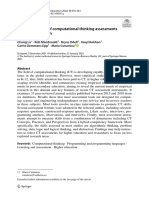0% found this document useful (0 votes)
30 views29 pagesInheritance Concept
The document discusses the concept of inheritance in object-oriented programming, detailing how classes can be derived from existing classes to create specialized or augmented types. It explains class hierarchy, access control, and the rules governing constructors in derived classes. Additionally, it covers the importance of access specifiers (private, public, protected) and the ability to override methods in subclasses.
Uploaded by
Rivicca CastilloCopyright
© © All Rights Reserved
We take content rights seriously. If you suspect this is your content, claim it here.
Available Formats
Download as PDF, TXT or read online on Scribd
0% found this document useful (0 votes)
30 views29 pagesInheritance Concept
The document discusses the concept of inheritance in object-oriented programming, detailing how classes can be derived from existing classes to create specialized or augmented types. It explains class hierarchy, access control, and the rules governing constructors in derived classes. Additionally, it covers the importance of access specifiers (private, public, protected) and the ability to override methods in subclasses.
Uploaded by
Rivicca CastilloCopyright
© © All Rights Reserved
We take content rights seriously. If you suspect this is your content, claim it here.
Available Formats
Download as PDF, TXT or read online on Scribd
/ 29

